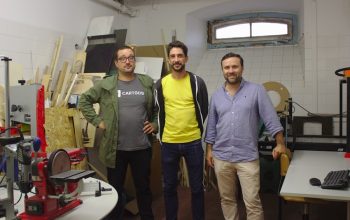The podcasting phenomenon has transformed the way we consume audio content, evolving from a niche hobby into a mainstream medium. The inception of podcasts can be traced back to the early 2000s, but it wasn’t until the advent of the smartphone that the format truly began to flourish. With the introduction of Apple’s iTunes podcast directory in 2005, the accessibility of podcasts skyrocketed, allowing users to easily discover and subscribe to a plethora of shows.
This marked a pivotal moment in the history of audio content, as it democratized broadcasting, enabling anyone with a microphone and an internet connection to share their voice with the world. As technology advanced, so did the podcasting landscape. The proliferation of streaming services and platforms such as Spotify, Google Podcasts, and Stitcher has made it easier than ever for creators to distribute their content.
The rise of smart speakers like Amazon Echo and Google Home has further fueled this growth, allowing listeners to access their favorite shows hands-free. According to a report by Edison Research, as of 2023, over 80 million Americans listen to podcasts monthly, a figure that underscores the medium’s rapid ascent. This surge in popularity has led to an explosion of diverse content, ranging from true crime and comedy to educational programming and niche interests, catering to an ever-expanding audience.
Key Takeaways
- Podcasts have seen a significant rise in popularity in recent years, with more and more people tuning in to listen to a wide range of content.
- There has been a notable shift in the demographic of podcast audiences, with a growing number of younger listeners and an increase in diversity among listeners.
- Technology has played a significant role in the growth of podcast consumption, with the rise of smartphones and streaming platforms making it easier for people to access and listen to podcasts.
- Podcasting has had a significant influence on traditional media, with many traditional outlets incorporating podcasting into their content offerings to reach a wider audience.
- Social media has played a crucial role in the growth of podcasts, with platforms like Twitter, Instagram, and Facebook being used to promote and share podcast content, leading to increased audience engagement.
- The future of podcast audience engagement looks promising, with the potential for interactive features and personalized content to further enhance the listener experience.
- Monetization and advertising in the podcasting industry have become increasingly important, with more companies looking to invest in podcast advertising to reach a highly engaged audience.
- Podcast audiences have a global reach, with listeners tuning in from all around the world, making it a valuable platform for content creators and advertisers to reach a diverse audience.
Demographic Shifts in Podcast Audience
The demographic landscape of podcast listeners has undergone significant changes in recent years. Initially dominated by tech-savvy young adults, the audience has broadened considerably, encompassing a wide range of age groups and backgrounds. Recent studies indicate that while millennials still represent a substantial portion of the listenership, there is a notable increase in older demographics engaging with podcasts.
For instance, the number of listeners aged 55 and older has grown by over 50% since 2020, reflecting a shift in how different generations are consuming media. This diversification is not limited to age; it also extends to gender and ethnicity. Historically, podcasting was perceived as a male-dominated space, but recent data suggests that women now make up nearly half of all podcast listeners.
Furthermore, there is a growing representation of minority voices within the podcasting community, with shows focusing on topics relevant to various cultural backgrounds gaining traction. This shift not only enriches the content available but also fosters a sense of inclusivity, allowing underrepresented groups to share their stories and perspectives with a wider audience.
The Impact of Technology on Podcast Consumption

Technological advancements have played a crucial role in shaping how audiences consume podcasts. The rise of mobile devices has made it possible for listeners to access their favorite shows anytime and anywhere, leading to an increase in on-the-go consumption. Commuters, gym-goers, and multitaskers have embraced podcasts as a convenient form of entertainment that fits seamlessly into their busy lives.
The ability to download episodes for offline listening has further enhanced this flexibility, allowing users to curate their audio experiences without being tethered to an internet connection. Moreover, innovations in audio quality and production techniques have elevated the overall listening experience. With affordable recording equipment and editing software readily available, aspiring podcasters can produce high-quality content that rivals traditional radio broadcasts.
The introduction of dynamic ad insertion technology has also transformed how advertisements are integrated into podcasts, allowing for more targeted marketing strategies that cater to specific audience segments. As a result, advertisers are increasingly recognizing the value of podcasting as an effective medium for reaching engaged listeners.
Podcasting’s Influence on Traditional Media
| Metrics | Data |
|---|---|
| Percentage of Americans who have listened to a podcast | 51% |
| Number of podcast listeners in the US | 116 million |
| Percentage of podcast listeners who listen to podcasts at home | 49% |
| Percentage of podcast listeners who listen to podcasts in the car | 22% |
| Percentage of podcast listeners who listen to podcasts while walking or running | 11% |
The rise of podcasts has not only created new avenues for content creators but has also significantly impacted traditional media outlets. Many radio stations and television networks have begun to embrace podcasting as a complementary platform for their existing content. This convergence is evident in the way established media companies are producing original podcasts that expand on popular television shows or news segments.
For example, NPR has successfully launched numerous podcasts that delve deeper into stories covered on their radio programs, providing audiences with additional context and analysis. Furthermore, the success of independent podcasters has prompted traditional media organizations to rethink their strategies for audience engagement. The intimate nature of podcasting allows for a more personal connection between hosts and listeners, fostering loyalty that traditional media often struggles to achieve.
As a result, many broadcasters are now exploring ways to incorporate storytelling techniques commonly found in podcasts into their programming. This blending of formats not only enhances viewer engagement but also encourages traditional media to innovate in order to remain relevant in an increasingly digital landscape.
The Role of Social Media in Podcast Growth
Social media platforms have emerged as powerful tools for promoting podcasts and fostering community engagement among listeners. Creators leverage platforms like Instagram, Twitter, and TikTok to share snippets of their episodes, behind-the-scenes content, and engage directly with their audience. This direct interaction helps build a loyal fan base and encourages word-of-mouth marketing, which is crucial for podcast growth.
For instance, many podcasters utilize Instagram Stories or TikTok videos to create buzz around new episodes or special guests, effectively turning their social media presence into an extension of their podcast brand. Additionally, social media facilitates collaboration among podcasters, leading to cross-promotion opportunities that can significantly expand reach. When two podcasters with overlapping audiences collaborate on an episode or promote each other’s shows on their respective platforms, they tap into new listener bases that may not have been previously aware of their content.
This collaborative spirit is particularly evident in niche communities where creators share similar interests or themes, fostering a sense of camaraderie that enhances the overall podcasting ecosystem.
The Future of Podcast Audience Engagement

As the podcasting landscape continues to evolve, audience engagement strategies are likely to become more sophisticated and interactive. One emerging trend is the incorporation of listener feedback into show development.
This participatory approach not only strengthens the bond between hosts and listeners but also ensures that content remains relevant and appealing. Moreover, advancements in technology may pave the way for more immersive listening experiences. The integration of augmented reality (AR) and virtual reality (VR) could revolutionize how audiences interact with podcasts by providing visual elements that complement audio storytelling.
Imagine listening to a true crime podcast while simultaneously viewing interactive maps or timelines that enhance the narrative experience. As these technologies become more accessible, they hold the potential to redefine audience engagement in ways that were previously unimaginable.
Monetization and Advertising in the Podcasting Industry
Monetization strategies within the podcasting industry have evolved significantly as the medium has gained popularity.
Advertising has become a cornerstone of podcast monetization, with brands increasingly recognizing the value of reaching engaged audiences through targeted ads.
According to industry reports, podcast advertising revenue is projected to surpass $2 billion by 2024, highlighting the growing importance of this medium in marketing strategies. Dynamic ad insertion technology has revolutionized how advertisements are integrated into podcasts, allowing for tailored messaging based on listener demographics and preferences. This capability enables advertisers to deliver relevant content at optimal times during episodes, enhancing the effectiveness of their campaigns.
Additionally, some podcasters are experimenting with subscription models that offer exclusive content or ad-free experiences for paying subscribers. This shift towards monetization reflects a broader trend within the creative economy where content creators seek sustainable income sources while maintaining artistic integrity.
The Global Reach of Podcast Audiences
Podcasting’s appeal extends far beyond borders, with audiences around the world embracing this medium as a source of entertainment and information. While North America remains a significant market for podcasts, countries such as Australia, the United Kingdom, and various nations in Europe have witnessed substantial growth in listenership. In regions like Asia and Africa, where internet access is expanding rapidly, podcasting is emerging as a popular format for storytelling and education.
The global nature of podcasting also fosters cross-cultural exchange and collaboration among creators from different backgrounds. International co-productions are becoming increasingly common as podcasters seek to share diverse perspectives and narratives with global audiences. For instance, shows that explore cultural traditions or social issues from various countries can resonate with listeners worldwide, creating a sense of shared experience despite geographical differences.
As podcasting continues to grow on a global scale, it holds the potential to bridge cultural divides and foster understanding among diverse communities. In summary, the rise of podcasts has reshaped audio consumption patterns across demographics while influencing traditional media landscapes and leveraging technology for enhanced engagement. As social media plays an integral role in promoting growth and monetization strategies evolve within the industry, the future promises exciting developments for both creators and audiences alike.
With its global reach expanding rapidly, podcasting stands poised to continue its trajectory as a vital medium for storytelling and connection in an increasingly interconnected world.
If you’re interested in learning more about podcast audience growth, you may want to check out this article on the Education Podcast Network’s blog titled Hello World. This article discusses strategies and tips for expanding your podcast audience and reaching more listeners. It’s a great resource for podcasters looking to increase their reach and engagement.
FAQs
What is a podcast?
A podcast is a digital audio or video file that is available for streaming or downloading on the internet. It is typically a series of episodes on a particular topic or theme.
How is podcast audience growth measured?
Podcast audience growth is typically measured by the number of downloads, listens, and subscribers to a podcast. This data can be tracked through podcast hosting platforms and analytics tools.
What are some factors contributing to podcast audience growth?
Factors contributing to podcast audience growth include the quality of content, consistency in publishing episodes, effective marketing and promotion, guest appearances, and engagement with listeners through social media and other channels.
What are some strategies for growing a podcast audience?
Some strategies for growing a podcast audience include creating high-quality and engaging content, collaborating with other podcasters or influencers, leveraging social media and email marketing, optimizing podcast metadata for search, and seeking out guest opportunities on other podcasts.
What are some trends in podcast audience growth?
Some trends in podcast audience growth include the increasing popularity of true crime, comedy, and interview-style podcasts, the rise of niche and specialized content, and the growing influence of social media and streaming platforms on podcast discovery and consumption.



